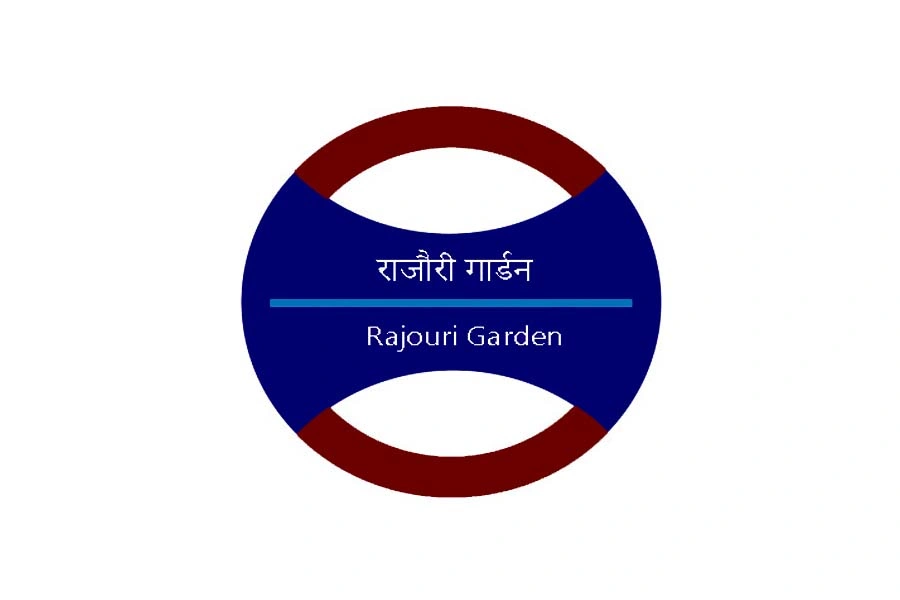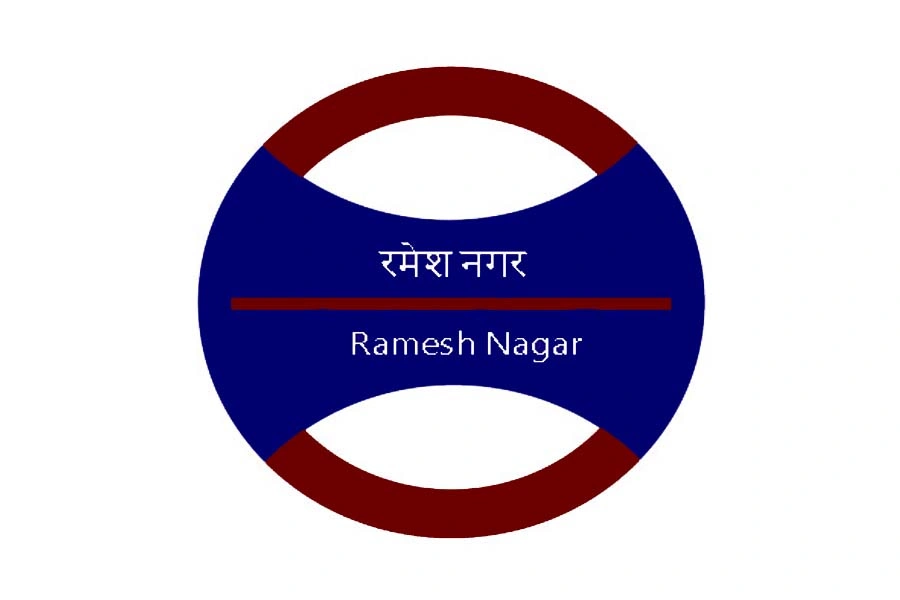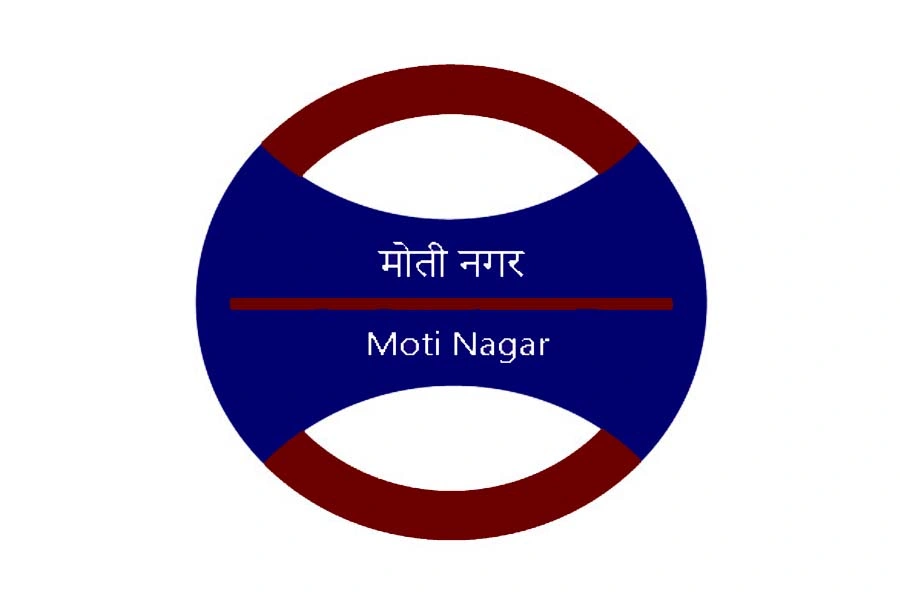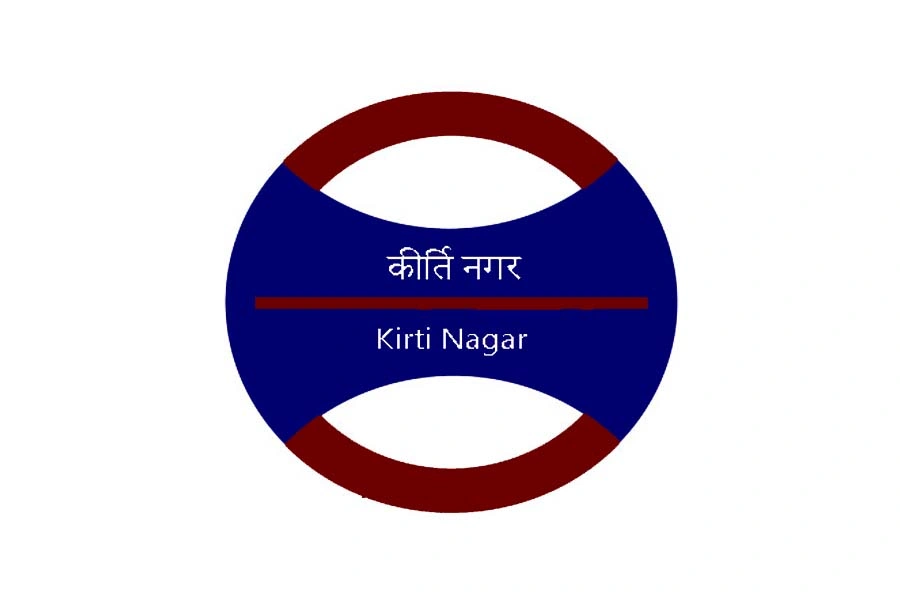
Rajouri Garden Metro Station’s top features, key connectivity, nearby shopping hubs, well-equipped gates, and commuter-friendly amenities. When you think of Rajouri Garden, your mind might wander to bustling markets, vibrant streets, and the perfect blend of modernity and tradition. Nestled in West Delhi, Rajouri Garden Metro Station serves as a crucial transit point for locals and visitors alike. This station is more than just a stop; it’s a gateway to some of Delhi’s most dynamic neighborhoods. Line 3-Blue Line · RAJOURI GARDEN Station Closed. 21 NoIDA Electronic City is the DWARKA Sector. Line 7: Pink Line · Normal Service. SHIV VIHAR MAJLIS PARK. The Delhi Metro’s Rajouri Garden metro station serves as a junction for the Pink and Blue Lines.
Delhi Metro is a top-notch metro system. It has the most up-to-date train control and communication technology to guarantee dependability and safety in train operations. It features coaches with air conditioning that are up to date. The Automatic Fare Collection System, which was first used in the nation, is used for ticketing and passenger control. Trains in Delhi Metro are finally available at three-minute intervals, making travel enjoyable. Flap-doors that are controlled by “smart-cards” and contact-less tokens are used to enter and depart metro stations.
In this blog, we’ll dive into everything you need to know about Rajouri Garden Metro Station—its significance, connectivity, nearby attractions, and much more. By the end, you’ll thoroughly understand why this station is a linchpin in Delhi’s vast metro network. Rajouri Garden Metro Station (Pink Line). 117 Ring Rd, New Delhi, DL, IN. Line 3-Blue Line · RAJOURI GARDEN Station Closed. 21 Noida Electronic City is the DWARKA Sector. Line 7: Pink Line · Normal Service. The Delhi Metro’s Rajouri Garden metro station is a junction for the Pink and Blue Lines.
↓Pink Line Towards Majlis Park Platform 4. ESI BASAI DARAPUR · Punjabi Bagh … Rajouri Garden Metro Station. 1, Mtnl Office. 2, Rajouri Garden Metro Thana…
Historical Significance of Rajouri Garden Metro Station
Rajouri Garden Metro Station holds a pivotal role in the growth and development of its surrounding region. Nestled in West Delhi, this station connects one of the city’s most bustling residential and commercial areas with the rest of the capital. Though it is not a historical monument itself, its location in Rajouri Garden speaks volumes about the region’s urban evolution.
The Growth of West Delhi
Rajouri Garden as an area flourished post-independence, with the development of modern housing colonies and a shift from agrarian to urban settings. With the partition of India in 1947, many refugees from West Punjab settled in the area, bringing with them a dynamic culture that shaped Rajouri Garden into the vibrant place it is today. The transformation from farmlands to a commercial hub reflects the spirit of post-independence modernization.
The construction of the Rajouri Garden Metro Station, which serves both the Blue Line and the Pink Line of the Delhi Metro, further cemented the area’s importance. It became a vital transit point, linking the region not only with central parts of Delhi but also to peripheral zones that have grown rapidly in recent years. As West Delhi became a thriving commercial and residential hub, Rajouri Garden Metro Station helped accelerate economic and social activity, making it easier for both residents and businesses to flourish.
Cultural Hub
Rajouri Garden has always been culturally rich, with a heavy influence of Punjabi traditions and lifestyle, which is visible in the numerous eateries, clothing stores, and markets that dot the area. The metro station has played a role in supporting the inflow of shoppers and visitors, making Rajouri Garden one of the most frequented areas for fashion and food.
Navigating to Rajouri Garden Metro Station
Navigating to Rajouri Garden Metro Station is straightforward due to its strategic positioning on two major metro lines — the Blue Line and the Pink Line. This gives commuters a range of options to reach the station, whether they are coming from central Delhi, the outer regions, or even neighboring cities like Noida or Gurgaon.
Via Blue Line
The Blue Line is one of the most crucial lines of the Delhi Metro, connecting Dwarka Sector 21 in the west to Noida City Centre and Vaishali in the east. Rajouri Garden lies between Tagore Garden and Ramesh Nagar stations, making it easily accessible for passengers coming from both ends of the Blue Line.
If you are coming from central Delhi or areas like Connaught Place, simply board a Blue Line train towards Dwarka and get off at Rajouri Garden. The station is about 20 minutes away from Connaught Place, making it a convenient commute for those working or living in central areas.
Via Pink Line
The Pink Line is one of the newer lines, adding further connectivity to the metro network by linking several key areas in a circular manner. Rajouri Garden Metro Station is an interchange point between the Blue Line and Pink Line, providing seamless transfers for passengers traveling across the city.
If you are coming from East Delhi, South Delhi, or places like Lajpat Nagar or Azadpur, you can hop onto the Pink Line and exit at Rajouri Garden, where a simple change of platforms will take you to the Blue Line or vice versa. The Pink Line is particularly useful for those wanting to bypass the congested inner city areas by taking a more circular route.
Reaching by Bus or Auto
For those who live near Rajouri Garden but not directly along the metro lines, the station is well-connected by road. Numerous DTC (Delhi Transport Corporation) buses and private buses ply the area, offering direct services to the metro station.
Auto-rickshaws and e-rickshaws are another convenient way to reach Rajouri Garden Metro. The station has multiple access points that are connected to nearby roads, making it easy to catch a ride from the residential or commercial areas around.
By Car
For drivers, Rajouri Garden Metro Station offers ample parking facilities, allowing you to park your vehicle and switch to the metro for the remainder of your journey. This is particularly useful for those commuting into more congested areas of Delhi like Connaught Place, as you can park at Rajouri Garden and avoid heavy traffic by using the metro.
In Summary: Navigation Tips
- Blue Line: Ideal for travelers from central and western parts of Delhi, or even from Noida and Dwarka.
- Pink Line: Convenient for those coming from areas such as Lajpat Nagar, Azadpur, or East Delhi.
- Bus and Auto: Multiple public transport options make Rajouri Garden Metro Station easily accessible even if you’re not directly near a metro line.
- Car: Parking is available, allowing commuters to park and ride.
Rajouri Garden Metro Station’s seamless connectivity and integration with both local and long-distance transport networks make it one of the most convenient stations for Delhi residents. Whether you’re a shopper, a commuter, or someone looking to explore West Delhi, this metro station offers ease of access and an entry point into one of Delhi’s busiest districts.
1. Overview of Rajouri Garden Metro Station
Rajouri Garden Metro Station is part of the Blue Line of the Delhi Metro, which is one of the busiest lines in the network. The station is an interchange point between the Blue Line and the Pink Line, making it a hub of activity throughout the day. It was first opened to the public in 2005, and over the years, it has grown in importance due to the expanding metro network and the rapid development of the surrounding areas.
The station itself is well-designed, with clear signage and multiple entry and exit points that make navigation easy even during rush hours. The architecture of the station is functional, focusing on providing maximum convenience to passengers. Escalators, elevators, and stairs are strategically placed to ensure smooth movement, catering to both the able-bodied and those with disabilities.
A Day at Rajouri Garden Metro Station
Imagine you’re a daily commuter who uses Rajouri Garden Metro Station to get to work. You enter the station early in the morning, greeted by the familiar buzz of people hurrying to catch their trains. The station is already alive with activity, with announcements echoing through the corridors, vendors setting up their stalls, and security personnel maintaining order. As you make your way to the platform, you can’t help but notice the efficiency with which the station operates—trains arriving and departing with clockwork precision, ensuring you reach your destination on time.
2. Gates and Facilities at Rajouri Garden Metro Station
Rajouri Garden Metro Station is designed to cater to a high volume of passengers, ensuring ease of access and convenience through multiple gates and well-maintained facilities. Understanding the layout and available amenities at each gate can help streamline your journey, whether you’re entering or exiting the station.
Gate 1: Towards TDI Mall and City Square Mall
- Access: This gate is strategically located for those who want to visit the nearby shopping malls, TDI Mall and City Square Mall. It’s the most popular gate for shoppers and those looking to indulge in a quick retail therapy session after their commute.
- Facilities:
- Escalators and Elevators: Both escalators and elevators are available, ensuring easy access for everyone, including the elderly and those with disabilities.
- ATMs: ATMs are located near this gate, providing easy access to cash for any purchases.
- Parking Area: There’s a designated parking area near this gate, making it convenient for those who prefer to park their vehicles before boarding the metro.
Gate 2: Towards Rajouri Garden Market and Ring Road
- Access: This gate is your go-to entry point if you plan to visit the bustling Rajouri Garden Market or need access to the Ring Road. The market is famous for its ethnic wear shops, making this gate popular among wedding shoppers.
- Facilities:
- Cycle and Bike Stand: A secure cycle and bike stand is available for those who prefer to ride to the station.
- Public Restrooms: Well-maintained public restrooms are located near this gate, ensuring that passengers have access to clean facilities.
- Snack Stalls: Several snack stalls are positioned close to this gate, allowing commuters to grab a quick bite on the go.
Gate 3: Towards ESI Hospital and Residential Areas
- Access: Gate 3 is primarily used by those heading towards the nearby ESI Hospital or the residential areas surrounding Rajouri Garden. It’s a quieter gate compared to the others, making it ideal for those who wish to avoid the crowds.
- Facilities:
- Medical Facilities: Given its proximity to ESI Hospital, there are basic medical facilities available, including a first aid station.
- Wheelchair Accessibility: This gate is fully wheelchair accessible, with ramps and wide doorways to accommodate wheelchairs.
- Auto-Rickshaw Stand: An auto-rickshaw stand is conveniently located near this gate, making it easy for commuters to find transportation to nearby areas.
Gate 4: Towards Tagore Garden and Residential Complexes
- Access: Gate 4 is useful for those heading towards Tagore Garden or the residential complexes in the vicinity. It’s also an entry point for students attending nearby schools and colleges.
- Facilities:
- Bookstores and Newsstands: For those who like to read during their commute, bookstores and newsstands are located near this gate, offering a variety of newspapers, magazines, and books.
- Security Checks: Enhanced security checks are conducted at this gate, especially during peak hours, ensuring the safety of all passengers.
- Drinking Water Stations: Drinking water stations are available, providing commuters with access to clean drinking water free of charge.
Additional Facilities Across All Gates of Rajouri Garden Metro Station
- Ticket Counters and Smart Card Recharge: Each gate at Rajouri Garden Metro Station is equipped with ticket counters where passengers can purchase tokens or recharge their smart cards. For added convenience, there are also automated machines that allow for quick recharge of smart cards.
- Lost and Found: A lost and found counter is available at the station, ensuring that any misplaced items are collected and returned to their owners.
- Emergency Services: The station is equipped with emergency services, including fire extinguishers, emergency exits, and an intercom system that allows passengers to communicate with station staff in case of any issues.
- Digital Information Displays: Digital displays are positioned at all gates, providing real-time information about train arrivals, departures, and any delays, ensuring passengers are well-informed throughout their journey.
These gates and facilities make Rajouri Garden Metro Station not just a transit point, but a well-equipped hub designed to cater to the diverse needs of its passengers. Whether you’re a shopper, a daily commuter, or someone visiting the area, the station’s thoughtful amenities ensure a smooth and comfortable experience from the moment you enter until you exit.
3. Connectivity and Routes of Rajouri Garden Metro Station
Rajouri Garden Metro Station’s significance lies in its strategic location and connectivity. As part of both the Blue Line and the Pink Line, it connects the western parts of Delhi with central and eastern areas, providing seamless travel options for commuters.
Blue Line: Connectivity
The Blue Line connects Noida City Center and Vaishali in the east with Dwarka Sector 21 in the west. Rajouri Garden lies between Ramesh Nagar and Tagore Garden on this line. It connects to major hubs like Connaught Place, Barakhamba Road, and Mandi House, making it a crucial route for those traveling to the heart of Delhi. The Blue Line also intersects with the Yellow Line at Rajiv Chowk, the Violet Line at Mandi House, and the Magenta Line at Janakpuri West, further enhancing connectivity.
Pink Line: Connectivity
The Pink Line, which forms a loop around the city, intersects with almost all other lines in the Delhi Metro network. Rajouri Garden is situated between Mayapuri and ESI Hospital on this line. The Pink Line connects to significant areas like South Extension, Lajpat Nagar, and Mayur Vihar, providing an alternative route for commuters who wish to avoid the more crowded Blue Line.
Step-by-Step Guide: Reaching Popular Destinations from Rajouri Garden Metro Station
Here’s a step-by-step guide on how to reach some popular destinations from Rajouri Garden Metro Station:
- To Connaught Place:
- Step 1: Board a Blue Line train towards Noida City Centre or Vaishali.
- Step 2: Alight at Rajiv Chowk (10 stops, approximately 20 minutes).
- Step 3: Exit the station and you’re in the heart of Connaught Place.
- To South Extension:
- Step 1: Take the Pink Line towards Majlis Park.
- Step 2: Alight at South Extension (10 stops, approximately 25 minutes).
- To Noida City Centre:
- Step 1: Board a Blue Line train towards Noida City Centre.
- Step 2: Stay on the train till the last stop, Noida City Centre (20 stops, approximately 45 minutes).
- To Lajpat Nagar:
- Step 1: Take the Pink Line towards Majlis Park.
- Step 2: Alight at Lajpat Nagar (11 stops, approximately 27 minutes).
- To Dwarka Sector 21:
- Step 1: Board a Blue Line train towards Dwarka Sector 21.
- Step 2: Stay on the train till the last stop, Dwarka Sector 21 (10 stops, approximately 22 minutes).
4. Nearby Attractions and Amenities
Rajouri Garden is not just a transit point; it’s a destination in itself. The area surrounding the station is known for its vibrant markets, shopping malls, and food joints, making it a hotspot for both locals and tourists.
Shopping and Dining
- City Square Mall and TDI Mall: These malls are located just a short walk from the metro station. They are ideal for a shopping spree because they contain a range of retail establishments, from luxury labels to more affordable ones. Additionally, the food courts and restaurants here offer a range of cuisines, satisfying every palate.
- Rajouri Garden Market: Known for its ethnic wear shops, Rajouri Garden Market is a go-to destination for wedding shopping. The market is a blend of traditional and modern, offering everything from bridal lehengas to contemporary outfits.
- Food Joints: The area around the station is dotted with popular food joints like McDonald’s, KFC, and Haldiram’s. For those who prefer local flavors, numerous street food vendors offer delicious snacks like chaat, golgappas, and kebabs.
Cultural and Entertainment Options
- Pacific Mall: Located a little further from the metro station, Pacific Mall is a large shopping complex with a multiplex cinema. It’s a great place to catch the latest movies or spend a leisurely day shopping.
- Weddings and Events: Rajouri Garden is famous for its numerous banquet halls and marriage gardens. The area is often abuzz with celebrations, especially during the wedding season, making it a culturally vibrant locality.
5. List of Stations and Travel Time from Rajouri Garden
Understanding the travel time from Rajouri Garden to other stations can help in planning your journey efficiently. Here’s a list of key stations and the approximate time it takes to reach them:
Blue Line: Towards Noida City Centre/Vaishali
- Rajiv Chowk: 20 minutes
- Barakhamba Road: 22 minutes
- Mandi House: 24 minutes
- Yamuna Bank: 35 minutes
- Noida Sector 15: 42 minutes
- Noida City Centre: 45 minutes
Blue Line: Towards Dwarka Sector 21
- Subhash Nagar: 5 minutes
- Tilak Nagar: 7 minutes
- Janakpuri East: 10 minutes
- Janakpuri West: 12 minutes
- Dwarka Mor: 17 minutes
- Dwarka Sector 21: 22 minutes
Pink Line: Towards Majlis Park
- Mayapuri: 3 minutes
- Naraina Vihar: 5 minutes
- South Campus: 10 minutes
- INA: 15 minutes
- Lajpat Nagar: 27 minutes
- Hazrat Nizamuddin: 30 minutes
Pink Line: Towards Shiv Vihar
- ESI Hospital: 4 minutes
- Punjabi Bagh West: 7 minutes
- Shivaji Park: 10 minutes
- Ashok Park Main: 12 minutes
- Netaji Subhash Place: 20 minutes
- Azadpur: 27 minutes
6. Reviews and Passenger Experience
Rajouri Garden Metro Station is generally well-regarded by commuters. The station’s cleanliness, efficient management, and strategic location contribute to its positive reputation. Here’s a summary of common reviews and passenger experiences:
Cleanliness and Maintenance
Passengers often appreciate the cleanliness of the station. Regular maintenance ensures that the platforms, staircases, and elevators are kept in good condition. The station is well-lit, and safety measures, including CCTV surveillance and the presence of security personnel, are commendable.
Ease of Connectivity
Commuters love the connectivity offered by Rajouri Garden Metro Station. Being an interchange station, it provides easy access to different parts of the city. Passengers often mention the convenience of being able to switch between the Blue and Pink Lines without needing to exit the station.
Crowd Management
Given its importance in the network, Rajouri Garden Metro Station can get crowded, especially during peak hours. However, most passengers find the crowd management effective, with queues moving quickly and trains arriving frequently enough to handle the rush.
Accessibility
The station is designed to be accessible for all. Elevators and ramps are available for those with disabilities, making it easier for them to navigate the station. Additionally, the station’s clear signage and announcements in both Hindi and English help guide passengers efficiently.
Nearby Amenities
Passengers appreciate the variety of amenities available near the station. Whether it’s grabbing a quick bite or indulging in some shopping, the options around Rajouri Garden Metro Station cater to diverse needs. This makes it a convenient stop not just for transit but also for spending time in the area.
Conclusion
Rajouri Garden Metro Station stands as a testament to the efficiency and scale of the Delhi Metro network. It’s more than just a stop; it’s a hub of activity that connects people to various parts of the city. Whether you’re a daily commuter or a visitor exploring Delhi, this station offers convenience, connectivity, and a slice of the city’s vibrant culture. With its strategic location, ease of access, and proximity to shopping and dining options, Rajouri Garden Metro Station truly is a crucial node in Delhi’s vast urban landscape.
So, the next time you find yourself in West Delhi, make sure to explore the surroundings of Rajouri Garden Metro Station—you might just discover something new and exciting.



